Your Complete Guide to Roofing Maintenance, Repairs, and Replacements
Contents
Your Complete Guide to Roofing Maintenance, Repairs, and Replacements
Repairing or replacing your roof may seem like a big undertaking, but if you know the correct steps to take and information to consider, the process can be easily managed. From inspections and maintenance to repairs and installation, find out what you need to know about all things roofing.
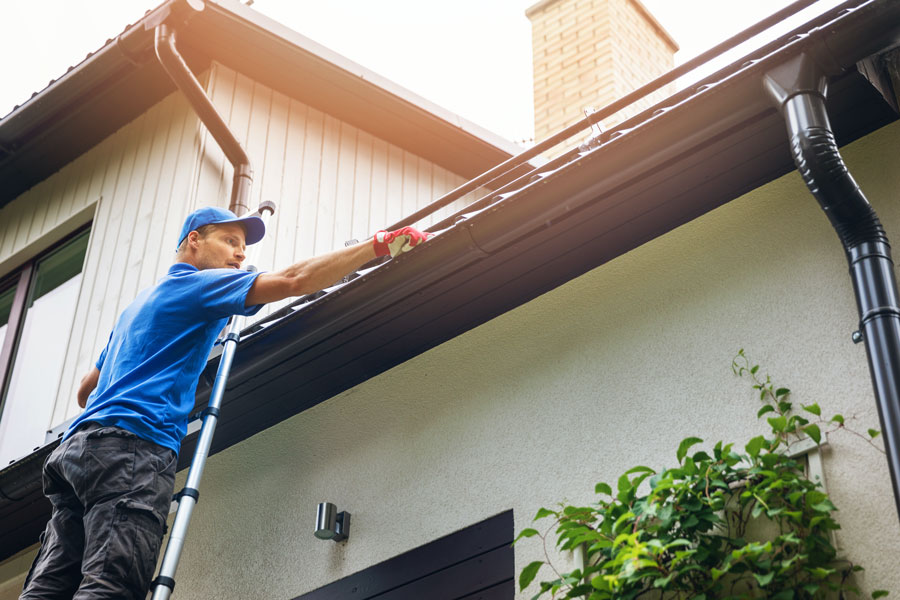
01. Routine Maintenance
Keeping your roof in good shape should be a top priority on your home care checklist, but it can seem like a daunting task. However, neglecting the exterior of your home will not only lead to damage, but also to larger repair bills. While routine roofing maintenance may seem daunting, a caved-in roof and large repair bill will be even worse. Roof maintenance becomes much less intimidating when you know what to look for.
How often should I have my roof inspected?
By inspecting your roof regularly, you decrease the chances of major issues and extend its lifespan. The frequency of your roof inspections is dependent upon several factors.
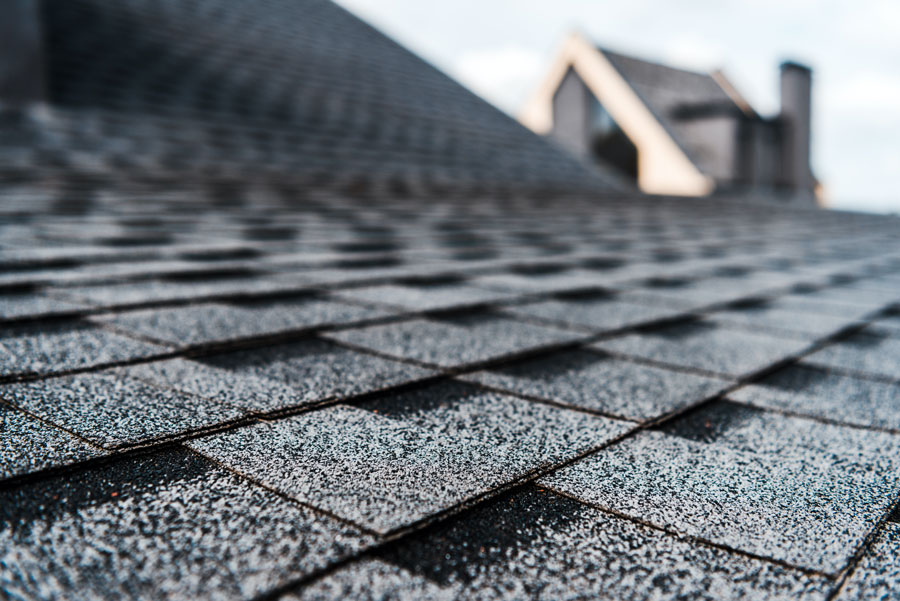
Age of Your Roof
Repairing or replacing your roof may seem like a big undertaking, but if you know the correct steps to take and information to consider, the process can be easily managed. From inspections and maintenance to repairs and installation, find out what you need to know about all things roofing.
Severe Weather
The National Roofing Contractors Association recommends that you have your roof inspected in both the spring and fall—a total of two times per year. While a basic inspection can be done on your own, it often takes a trained eye to detect weak or damaged areas. Extreme weather conditions such as hail, tornadoes, strong winds, and snow are cause for additional inspections, especially if your roof is older. Unlike the interior of your home, your home’s exterior is constantly exposed to the elements that cause wear and tear.
Severe weather can occur with little to no warning and can quickly damage your roof. After a big storm hits, one of your first actions should be to schedule a roof inspection and ensure that your shingles or tiles aren’t missing or damaged; these problems can quickly lead to leaks and water damage. However, damage to your roof may be present without the visible water damage that you would expect, which is why a professional inspection is important to prevent further issues.
What roof damage warning signs should I look for?
Some signs of roof damage are more obvious than others. One of the more apparent signs to look for is sagging. Sagging on your roof is identifiable by areas that appear to be curving downward or inward, usually due to water damage. While a small amount of sagging doesn’t mean that your roof is in immediate danger of collapse, the situation can quickly escalate to that. Sagging should be examined and fixed immediately, regardless of the severity. The solution to this problem can be to repair and reinforce the damaged area, but it also may require a roof replacement. A professional should always be consulted to evaluate the damage.
The health of your shingles is also an indicator of the health of your roof. Roofing materials such as shingles protect your home, so they need to be in good condition. It’s likely time for repairs if:
- You notice small granules from your shingles coming off through your gutters
- Your shingles are curving upward
- Your shingles are visibly cracked or missing from your view on the ground
Even small cracks in your shingles can lead to water damage, so don’t wait if you’re seeing signs.
One of the more obvious signs to look for is dark spots on your ceiling. When water finds its way through your roof and into your home, it creates dark spots that can lead to mold and even cause your ceiling to cave in, if the problem is severe. These spots may not be the first sign that occurs, but they are a sure indicator that there is damage to your roof that requires immediate attention.
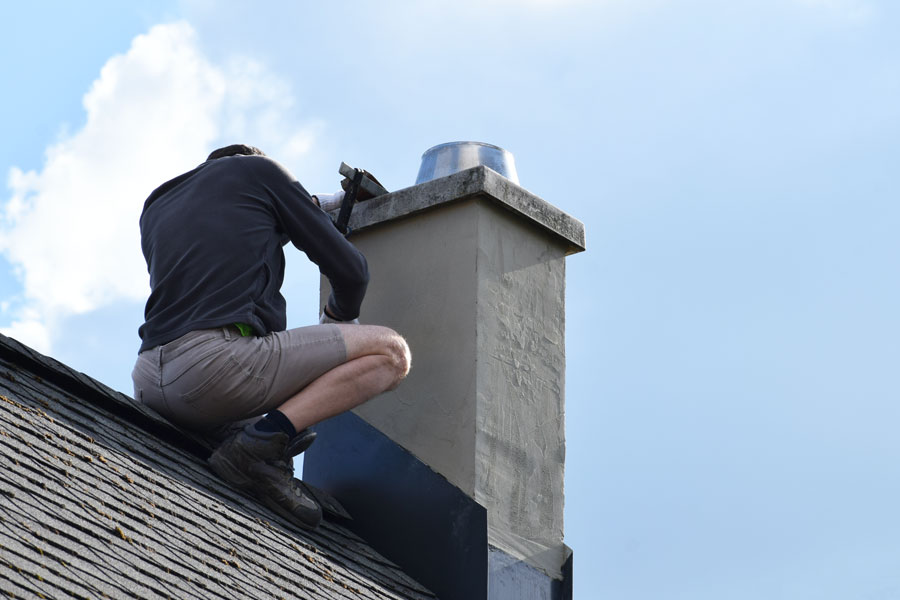
Should flashing be inspected?
Flashing is crucial to the health of your roof. Without it, your roof will definitely have leaks. Flashing seals the area between roofing materials and pipes, chimneys, vents, skylights, or anything else that breaks the surface of your roof to keep your home dry, clean, and insulated. Without proper flashing, your roof can’t function properly. Regularly inspecting the flashing on your home can prevent damage and leaks in the future.
02. Seasonal Maintenance
Taking time to prepare your home for the upcoming season can save your roof. While winter is notoriously difficult on your roof, spring and summer storms can wreak their own havoc. Caring for your roof in the transition times between seasons, as well as maintenance during each, will extend the lifespan of both your roof and home.
Winter
Preparing your home for winter is much less pleasant if you do it after the temperature has already dropped. Getting a head start on preparing your roof for the winter season could save you some frozen fingers and a potential accident. As always, during this process, you should look for any existing damage on your roof. This is true for any season, but it’s important for winter preparation because replacing your roof in winter can be difficult. If you suspect that your roof may need to be replaced, scheduling that to be done before the winter weather makes its entrance is the best option.
In preparation, you should also look for potential issues. If there are large, low-hanging limbs near your roof, consider whether they will be at risk of falling on your roof with the weight of ice or snow. Additionally, if your roof is older or has already sustained damage, consider having a professional determine whether your roof is able to hold the weight of snow.
Ice dams are also a major concern in the winter season; however, simply keeping your gutters clear and maintaining proper insulation and ventilation will keep the risk of ice dams to a minimum. If you know your roof is prone to ice dam buildup, heat tape or a roof ice melt system are solutions you can put into place before the weather gets bad. Unless you have an ice dam problem or are concerned about your roof collapsing, removing snow from your roof during winter doesn’t need to be a top priority.
Spring
After winter passes, inspect your roof during the early spring season. Check for any damage that may have occurred during the peak of winter. Keep your eye out for holes, damaged shingles, torn or missing flashing, and gutter damage that can lead to leaks and water damage (especially now that spring showers will be on the way). If you begin to notice water damage in your home in the form of sagging or dark spots on the ceiling, it’s best to call a professional to correct and prevent further problems.
Summer
Summer is the time to give your roof the most attention, as this season typically has the lowest risk for new roof damage. While you should check your roof from the ground during every season, summer is the best time to get on your roof, if possible, and take inventory of the overall health. Safety is the top priority when doing any home maintenance, so always consider calling a professional, quality roofing contractor to take a close look at your roof, especially if you feel unsure about how to safely perform a self-inspection.
Summer is also the best time to have your roof replaced. Early summer is the ideal time because temperatures are not yet too high and contractors will be less busy. Late summer through fall is the busiest time for roofers; if you try to make an appointment during this period, you may need to schedule your replacement farther out or settle with a roofer that you may not want. For the best chances of getting the time you want with your preferred contractor, plan ahead for your roof replacement.
Fall
When the leaves are falling, your gutters need attention, as they are very important to the safety and health of your home. Letting gutters build up with leaves and debris can lead to serious water damage and eventually winter ice dams. A thorough gutter cleaning should be done semi-annually—in the spring after winter weather has cleared and in the fall before it comes. .
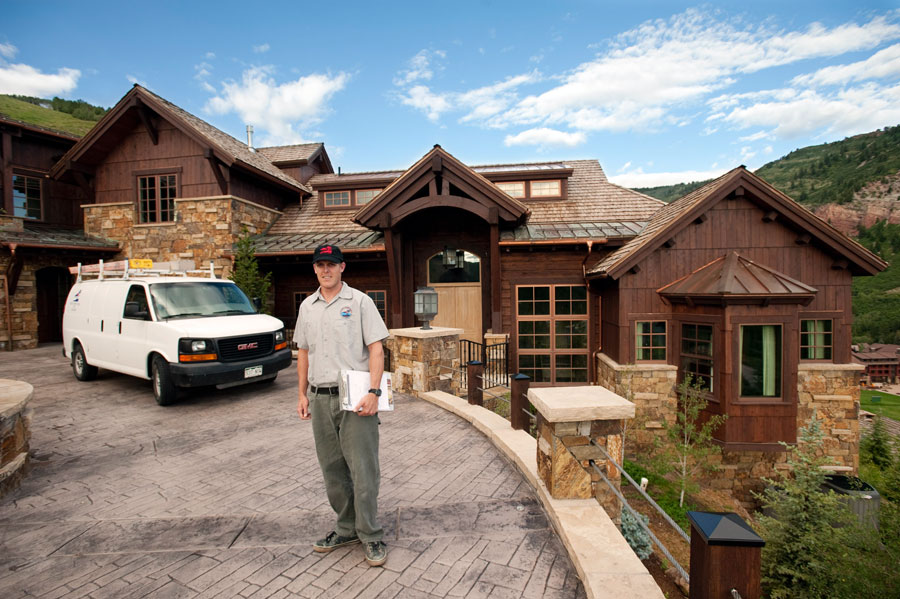
03. Roof Repairs
At some point during your time as a homeowner, you will probably need to do some kind of roof repair. The burning question for most homeowners is, “Can I do this repair myself and save money?” While it may seem to be the most cost-effective option when you begin, DIY roof repairs should be avoided, as they can turn into a more complicated process than expected.
Which repairs can be DIY?
Your roof is complex and repairs can be complicated. If your roof repair goes wrong, it can cost more to repair the damage you may have done, in addition to the cost of still hiring a professional for the original repairs. However, there are temporary fixes you can do to prevent further damage until your roofing professional can perform a full repair.
If you have damage to shingles or a hole in the roof that is causing leaks, an easy DIY fix is to put a plastic tarp over the area. Make sure the tarp is smooth and secured on the edges with nails or ropes; this will prevent water from leaking into the compromised area.
Very minor damage to your shingles can also be repaired by DIY methods. If you notice a small section that has broken, curling, or missing shingles, you can repair them fairly easily with roofer’s cement. If water has already gotten under the shingles or the problem seems to be a deeper issue, though, call a professional to fully evaluate the damage and make the necessary repairs.
When should I call a professional?
Ultimately, any time your roof is involved, a professional should be contacted. If you’re not sure what the problem or solution may be, calling a professional will save you more than just a headache: it will help you save time and money while preventing potential injuries. Many contractors will give an estimate detailing the problem, how to fix it, and how much the repairs will cost.

04. Getting Estimates
It’s no surprise that the expenses to repair or replace a roof can add up. When you’re looking for a roofer, it’s important to do research and gather estimates. Try to gather three different quotes to compare prices, and collect reviews and experiences with various roofing contractors from people you trust.
What to Expect from an Estimate
Many contractors will try to give you a flat rate as an estimate, but that’s not what you want. A good roofing estimate will give you an itemized list, breaking down the cost of both materials and labor. If it’s not clear, be sure to clarify what the numbers included in the estimate you receive actually represent. A quality roofer will be able to explain all the listed expenses.
There will likely be additional costs on your estimate for things such as renting a dumpster or the cost of disposing of the old roof. While you should expect these additional costs, you don’t want to be hit with hidden charges. A good roofer will be transparent; the more straightforward they are at this stage, the more assured you can be that you’re getting an accurate estimate and a job well-done.
To provide an accurate estimate, a roofer will need to inspect your roof. Otherwise, they will have no idea which expenses to anticipate with your roof repair or replacement. An inspection delivers valuable information for an estimate, and you should avoid signing a contract with a roofer if this has not been done. To avoid missing key information during your conversations with contractors, come prepared with a list of questions or concerns you have about your roof and the estimate.
- The following questions will help you determine whether you’re getting a truthful estimate:
- Is the roofer quoting the entire roof, or only the shingles?
- Is the quote itemized?
- Does the quote include a timeframe?
- Will the roofer remove and dispose of the old roof for you?
- Are the costs of permits included?
- What are the contractor’s payment terms?
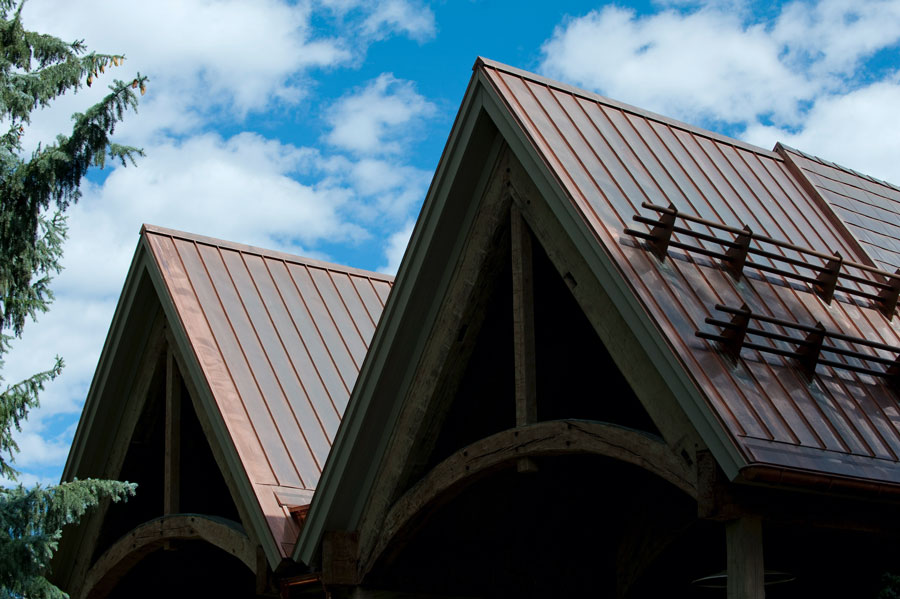
05. Choosing Your Features
The two highest quality roofing materials today are metal and architectural shingles. They are both durable, attractive, and designed to last. However, choosing your roofing material can be a difficult decision. While asphalt shingles are popular for affordability, the benefits of a higher quality material may be worth the additional cost.
Metal Roofing
One of the top benefits of metal roofing is curb appeal. Metal roofing is often considered one of the more aesthetically pleasing roofing materials, so if you’re considering selling your home in the near future, it could be in your favor to upgrade to a metal roof. In addition to curb appeal, benefits of metal roofs include:
- Lightweight materials
- Little to no maintenance required
- Energy efficiency
- Higher safety ratings than traditional shingles (noncombustible and fire-resistant)
With metal roofing, you also have a myriad of customization options. When customizing your metal roof, you can choose between copper, steel, zinc, aluminum, and other durable options as well as custom colors, styles, and designs. Moreover, if you prefer the look of other roofing styles over metal, you can choose a metal roof that mimics other roofing materials, such as shingles.
Metal roofs have the longest lifespan of all the roofing materials currently on the market. A metal roof can last 40 to 70 years, which means it will need less frequent repairs and replacements. This longevity is a large factor in deciding which material will be the most cost-effective for your home. While the up-front expenses may be higher for a metal roof, traditional shingles need more frequent replacements and are damaged much more quickly. Even when compared to architectural shingles, the longevity of metal roofing can’t be beat.
Architectural Shingles
If you’re drawn to the look of traditional asphalt shingles, architectural shingles may be the best option for you. The benefits of architectural shingles include:
- Longer warranties
- Low maintenance
- Durability
- Fire resistance
- Ease of installation
- Lower up-front costs
In regard to initial expenses, these shingles sit right between traditional shingles and metal roofing. Much like metal roofing, they can pay for themselves over time by requiring fewer repairs and replacements. Architectural shingles cut down on waste because of their shape and lack of tabs, making them eco-friendly, as well. Similarly to metal, they are highly durable and can withstand winds up to 120 mph with little maintenance.
Architectural shingles are customizable to match the look of any home. For a fraction of the cost you would pay for the actual materials, these shingles can imitate high-end slate tile, cedar shingles, and many other designs. You have the flexibility to keep the high-end look while lowering the price and increasing the durability. Architectural shingle roofs typically last 25 to 30 years. Comparatively, traditional shingles typically last 15 to 20 years.
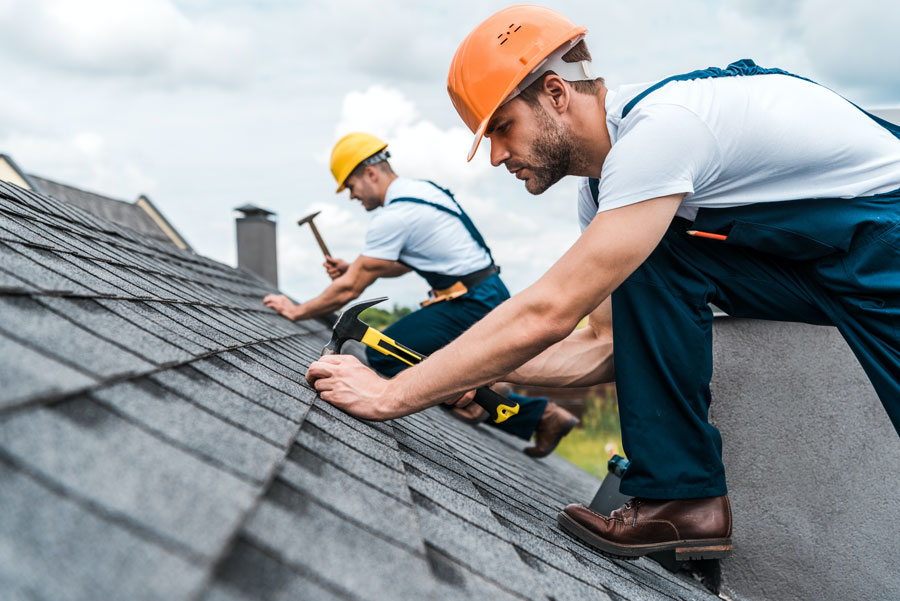
06. The Process of Getting Your Roof Replaced
A roof replacement is one of the most important home repairs you’ll face. The process of replacing a roof is complex, but not difficult to understand once you have the right information. The roofing process typically consists of removing the existing materials, checking flashing, installing underlayment, installing roofing materials that you’ve chosen, and then cleaning up with a final inspection.
Common Questions
Do I need to be home?
You can be home while your roof is being replaced, but you may not want to be. A roof replacement is very noisy, so if you work from home or spend a lot of time there during regular business hours, it may not be an ideal environment. Generally, roofing will not disrupt your regular day-to-day living.
How long will my roof replacement take?
The amount of time a roof replacement takes is dependent upon the size and shape of your home, as well as various outside factors. The length of time can range from a few days to a few weeks. If there is inclement weather, the timeline may be extended, as roofing can be dangerous, even in perfect weather. Safety is a top priority for all involved in a roofing project, and contractors will make decisions with that in mind. When you receive estimates, you can usually expect to receive an anticipated timeline. Some contracts will even include a penalty if the roof is not completed by a deadline.
Do I need to do anything to prepare my home?
While there isn’t anything that needs to be done to your roof beforehand, you may want to prepare other areas of your home. Roofing can be messy. Debris will be falling off the roof, which creates the risk of damage to your outdoor furniture and even your car. It’s recommended that you move anything that could potentially be damaged for the extent of the replacement. If you have pets, they should be kept inside or completely off the property. Some pets are highly disturbed by the sounds of a roof replacement, which may cause anxiety.
Layers of Your Roof
- Understanding the different layers and functions of materials on your roof may help you understand the process of a roof replacement. The layers may vary based on the roofing material you choose. The following are the basic layers for a shingle roof.
- Starter Strip Shingles – These are the initial shingle products that are installed. The starter strip shingles won’t be visible when your roof is finished, but they help your roof with water-shedding by covering shingle joints.
- Ridge Cap Shingles – Ridge cap shingles are designed specifically to fit the ridges of your roof. They are pre-bent and thicker to help protect water and debris from damaging your home.
- Ridge Vent – Ridge vents allow your attic to breathe. They assist with your home’s ventilation while ensuring energy efficiency, and typically go under the final layer of shingles.
- Synthetic Roof Deck Protection – Roof deck protection allows moisture to escape from your attic.
- Leak Barrier – Leak barriers are a watertight seal that prevent leaks on your roof. They are mostly used in valleys, around chimneys and skylights, and other areas where water may be likely to collect.
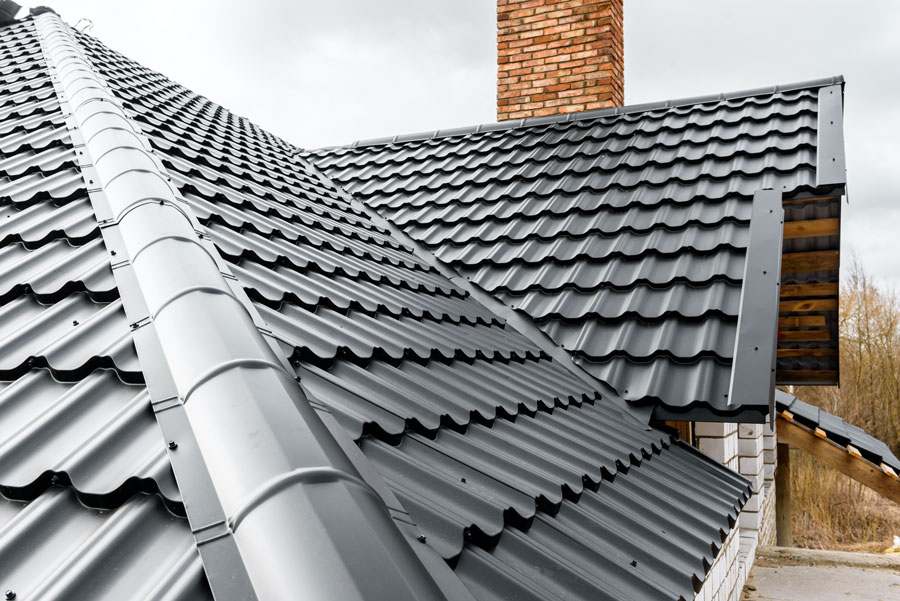
07. ROI of a New Roof
If you’re looking for an opportunity to increase the value of your home, a new roof may be a good step. A new roof is definitely important for structural and safety reasons, and it also substantially increases curb appeal.
Opportunity for Energy Efficiency
When you replace your roof, you are making an energy-efficient decision. As your roof ages, it gradually becomes less effective at saving energy and functioning as it should. Simply investing in a new roof, especially one with energy-efficient materials, increases your home’s value.
Attic Ventilation
Replacing your roof benefits ventilation tremendously. Proper ventilation decreases moisture levels, saves energy, and helps prevent damage. With better ventilation, you will lower the risk of ice dams on your roof, as well as the attic condensation that they cause. Better ventilation also helps your HVAC system work more efficiently.
Curb Appeal and Resale Value
A new roof is one of the quickest ways to increase curb appeal. Replacing a roof or upgrading it to a new roofing material can totally transform your home’s appearance and resale value. The National Association of the Remodeling Industry’s remodeling impact report states that new roofs provide a 109% return. Essentially, you could actually make a profit by installing a new roof before selling your home.